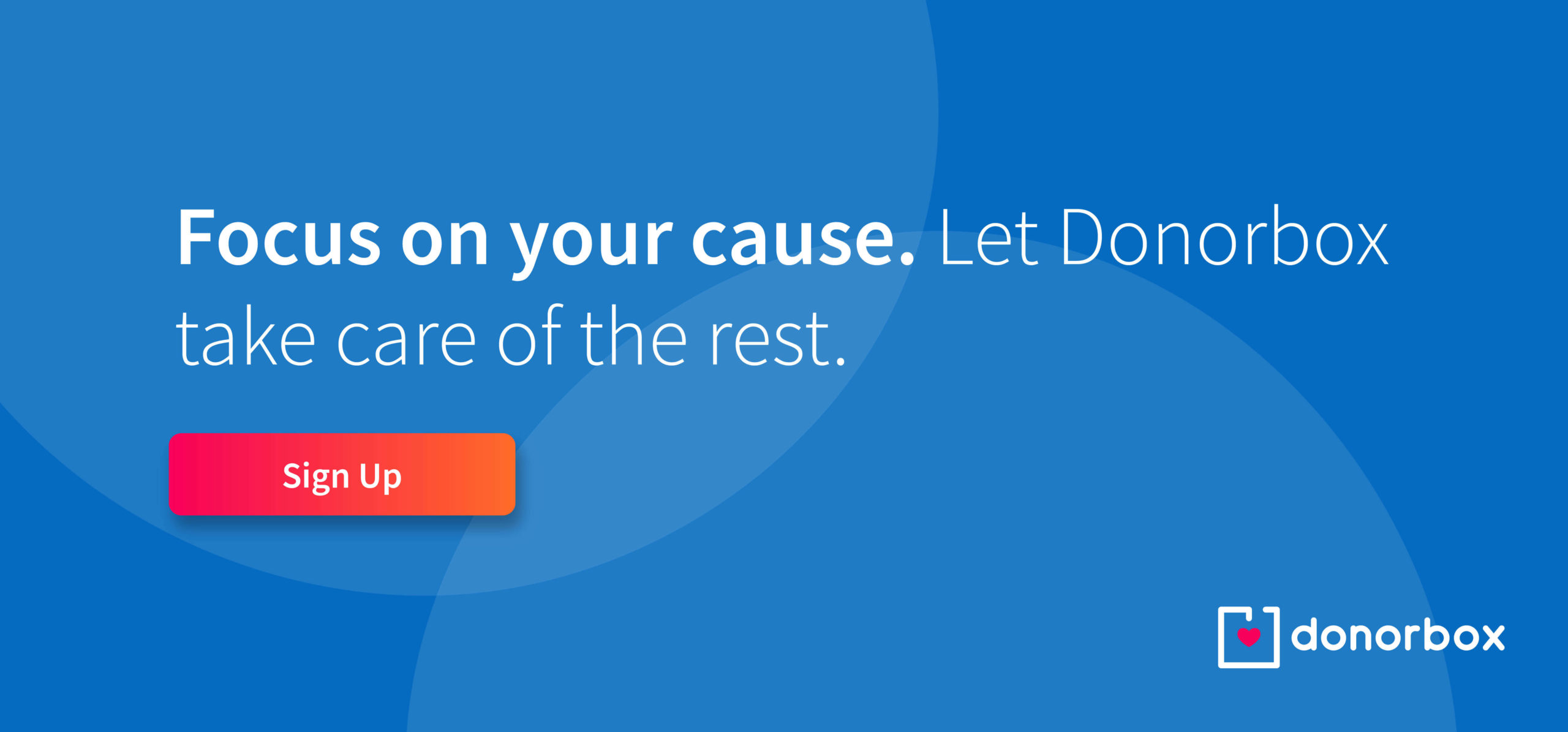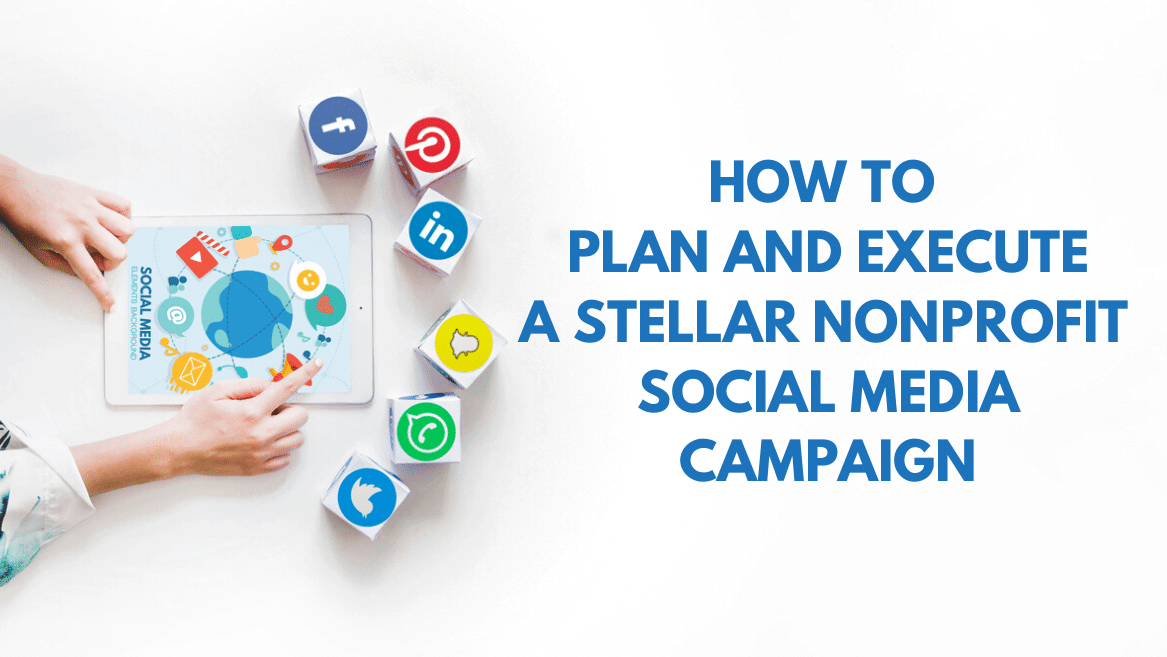We see the corporate giants with deep pockets hitting the feeds of our favorite social media networks. Shiny, high-quality images and professionally produced videos with hundreds of thousands of views.
How can a nonprofit marketer, with significantly fewer resources, do anything like it?
Additionally, social media campaign planning is not only strategic in nature but also largely creative, with many moving parts to each campaign such as team members, timelines, guidelines, and branding elements. That often demands several team members with a variety of skills.
All of this may seem daunting or downright impossible for a nonprofit to achieve…
However, part of the beauty of social media is that you don’t need tons of money or a top-tier ad agency to run a great social media campaign.
What you do need is a plan and an understanding of how social media campaigns work.

Why create social media campaigns?
Every month, there are over two billion active users on Facebook, one billion on Instagram, and 365 million on Twitter worldwide.
In the U.S. alone, 77% of the population has a social media account of some kind.
In fact, investments in social media advertising across the world are projected to grow to about $48 billion by 2021.
With billions of people on social media platforms — and continued growth in monthly users and influence — it’s hard to imagine how any organization, for-profit or nonprofit, could remain relevant without creating a compelling social media presence.
Social media advertising reaches audiences in a low-cost, impactful, and effective way. This is why social media campaigns have become a crucial marketing technique for nonprofits and businesses everywhere.
55% of people who engage with causes via social media are inspired to take further action, like donating money (68%), volunteering (53%), donating items (52%), or attending an event (43%).
What Is A Social Media Campaign?
Reduced to its bare essence, a campaign can be defined as an effort to achieve a specific goal, for a specific purpose, over a specific period of time.
By definition, a social media campaign is no different, except it uses one or more social media networks to achieve those goals.
The execution of a planned social media strategy usually aims to improve brand awareness, social media user interaction, as well as business goals or KPIs (key performance indicators).
What are the elements of a nonprofit social media campaign?
Like with any campaign, each element of this formula is integral to the whole. For a social media campaign to be successful, it needs to – at the very least – have:
- A specific goal: Goals provide a measure of success. This way everyone knows when the campaign has been successful. If we’re running a social media campaign with the goal of raising funds, this can also help us determine how much each prospect should be asked to contribute.
- A clear purpose: A purpose provides focus. And having a specific focus gives the team a sense they’re working for something worthwhile.
- A timetable: A timetable helps create a sense of urgency. It also allows the campaign to build and sustain momentum. Deadlines help to maintain a “critical mass” of interest, involvement, and commitment to the task.
How to plan and run a successful nonprofit social media campaign?
1. Set SMART Goals
A successful social media campaign should always focus on specific and clearly defined goals.
Practical goals for a successful social media campaign could include:
- Getting direct feedback from your donors
- Generating event sign-ups
- Building an email marketing list of engaged prospects
- Improving brand engagement across social media networks
- Increasing website traffic and brand recognition
- Driving volunteer sign-ups through your campaign advertisements
However, to set really effective goals, they need to be specific, measurable, attainable, relevant, and time-bound (SMART).
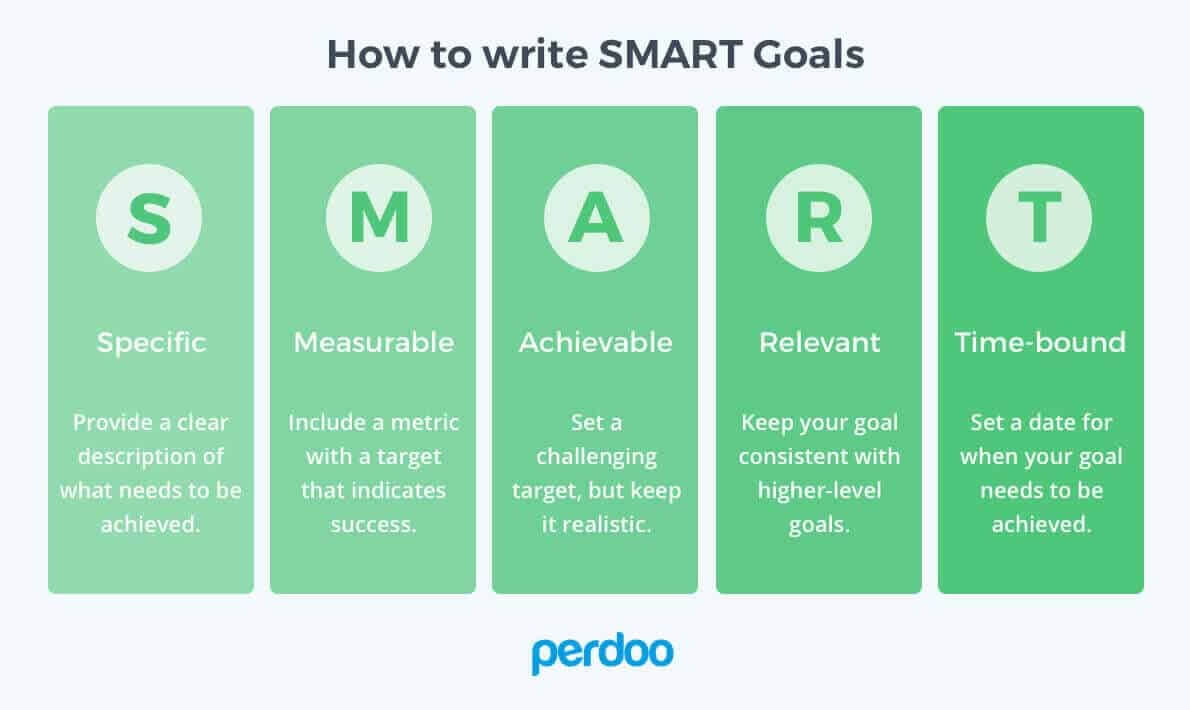
For example:
I want to increase my Facebook followers by at least 5,000 users in Q1 of 2020. To do this, I am going to launch a Facebook contest that incentivizes follows and shares.
Your social media goals should align with the overall goals of your organization, including serving your mission and advancing your strategic priorities. This ensures that your approach is aligned to the rest of your marketing and communications strategy and that you can more easily secure buy-in from the rest of the organization.
Pro tip: In the planning stages of your social media marketing campaign, consider your competition. Which nonprofits are similar to yours and already have successful social media accounts? What do they do? What is engagement like on their social posts?
2. Measure Your Baseline and Set KPIs
Before the launch of your social media campaign, be sure to measure a baseline of your traffic and your targeted metrics.
KPIs or Key Performance Indicators are measurable values that demonstrate how effectively an organization is achieving its objectives.
Your KPIs should be based on real data and provide context or direction that echo your organizational objectives, which is why measuring baseline first matters. When it comes to social media KPIs, here are some that are essential.
2.1 Amplification Rate
This metric refers to shares, retweets, reposts, reblogs, reviews… anything “re”. The more your content gets shared, the greater your reach. The more people you reach, the better your chances of attracting new donors.
By looking at your amplification stats, you can also get a better idea of what content to create and what gets your target audience interested.
To calculate, look at the analytics page of the social media platform in question.
2.2 Conversation Rate
Conversation refers to comments and replies to your content.
Ideally, you should aim to post content that sparks conversations. As long as your audience is engaged, no matter how small that audience is, it will grow organically and generate more donations/signups/interest.
To calculate, look at the analytics page of the social media platform in question.
2.3 Landing Page Conversion Rate
Looking at how many individuals click on ‘calls to action’ posted on your social media platforms and end up on your website is very important. Even more significant is to track how many of those visitors end up donating. This is by far the most helpful tool in evaluating your digital marketing efforts.
Tools such as Google Analytics can help you determine how many visitors reached your landing page, how they arrived there, and how many completed the desired action on that page.
To calculate, divide the total number of visitors to your donation page by the total number of donations made. Multiply by 100.
With Google Analytics, you can also measure:
- Uniques: This is the number of unique visitors your website has.
- Visits: How many times people visit your site in a given period.
- Most popular content: What do people read a lot?
- How people find you: What keywords lead people to your site?

3. Build an Audience Persona
Ensuring your content and messaging appeals to your target audience should always be your top priority. Whatever you do, don’t lose sight of who you are trying to connect with and why.
Otherwise, your audience will likely scroll right by your social posts or lose interest in your campaign in a matter of seconds.
That is why you need to understand your ideal audience before starting a social media campaign.
Develop audience personas, which are representations of your ideal supporters based on demographic data and information about individual members of your target audience.
Doing that helps you to create messages in your campaigns that can resonate with your target audience.
Some details to have in your persona include:
- Name
- Gender
- Age
- Income
- Location
- Pain points
- Favorite social media channels
- Hobbies
- Interests
The idea here is to create a profile of your audience member as if they were a real person, so you can craft targeted marketing messages to them. These messages should use the right tone of voice and address their specific needs and desires.
Give each persona a name as well as a comprehensive demographic background, then add specific details about what this person cares about, what their typical day is like, who they trust, and more.
Check out Hootsuite’s simple guide and template for creating audience/buyer personas.
4. Choose Your Social Media Networks
When running a social media campaign, you’re likely to get better results when you focus on a few social media channels.
Especially if you have limited time to spend on social, don’t worry about spreading yourself too thin by creating a presence on every platform. It’s better to instead excel on two or three.
From your research, while building your persona, you should by now have an idea of your ideal audience’s favorite social media channels. For instance, you might find your audience prefers Twitter over Instagram.
Another way to select social media channels for your campaign is to look at past results on your website analytics.
- Which channels have referred more visitors to your website in the past?
- Which channels have brought in more leads?
As you decide which social networks to use, you will ideally also need to define your strategy for each. For your donor testimonials, you might be focusing on Facebook and YouTube, while you might use Twitter for positioning yourself as a thought leader in your industry. This will also depend on the type of nonprofit. If you work for an animal rescue, sharing pictures of adorable animals might achieve the best results on Instagram.
If you don’t have business/company accounts on your social media network of choice, create one!
Here are Hootsuite’s guides to creating profiles and accounts on each one:
Pro tip: If you’re already using social media, take stock of your social media efforts so far. Ask yourself what’s working and what isn’t. Who is engaging with you? How does your social media presence compare to the competition? Then, you’ll be ready to start thinking about ways to improve.

5. Create a Social Media Calendar
At this stage, you’re going to brainstorm content elements and content ideas and put them into a social media calendar.
Your social media content calendar lists the dates and times at which you will publish types of content on each of your channels. It’s the perfect place to plan all of your social media activities—from images and link sharing to blog posts and videos. Your calendar also ensures consistency, makes sure your posts are spaced out appropriately and published at the optimal times, and also makes sure there’s a right content mix. Here is an example of establishing the content mix.
You might decide that:
- 40% of content will drive traffic back to your donation page
- 20% of content will be showcasing beneficiaries and testimonials from the field
- 25% of content will be curated from other sources
- 15% of content will support sign-ups for your membership program and your volunteering program
Placing these different post types in your content calendar will ensure you maintain the right mix.
Pay attention to when you post too. If you don’t know, check the social media platform’s native analytics.
Then, track how these different types of content are performing.
Here’s an article you can follow to create content ideas — if you’re stuck on generating content ideas. And, here’s a free social media calendar template by Hubspot.
And here’s Sprout Social’s research into the best times to post on social media, specifically for nonprofits.
Pro tip: When creating a social media calendar, consider which content type should be used on what platform. For example, if your campaign relies heavily on visuals, then maybe Instagram is the platform for you. If you require live streaming and want to share longer videos, Facebook might be a good option. And if you want to release shorter bursts of information, Twitter could be a good fit. Think about what each platform is best for and go from there.

6. Create Great Content
The bulk of your social media campaign work is going to come in at this point.
At this stage, you might want to start working on things like:
- Campaign slogans and other copywriting
- Selecting colors (if different than brand colors)
- Images and design elements
- Designing ads and banners
- Writing blogs, articles and post copy
- Creating videos
Don’t forget that great content is first and foremost useful and informative. You want your audience to stop and listen. If you don’t have information worth their time, why would they check out your post or campaign?
Great social media accounts also have a consistent voice, tone, and style. That’s key to letting people know what to expect from your feed. That is, why should they follow you? What’s in it for them?
Consistency also helps keep your content on-brand even if you have multiple people on your social media team.
And, like any other marketing channel or tactic, you need to be consistent to be successful on social media. You can’t just post inspirational quotes on Instagram and tweet a few stats each week and expect results.
Storytelling makes a difference
Great content will also make use of storytelling, showcasing moving and compelling stories. Stories help create an emotional connection, and that’s what moves people to act. CoSchedule created a simple infographic (see below) where they highlight that “Urgency + Emotional Connection = Conversion”. Stripped down, this is what effective social media campaigns achieve. They create an emotional connection through a story on social media and using a sense of urgency – move people to act and help accomplish a specific goal.
Pro tip: Make use of user-generated content. This type of content is an excellent way to offer a new perspective on your brand while building stronger relationships with your audience. Moreover, people tend to trust content from the average person more than they trust content from brands. Furthermore, there are no better advocates for your brand than your loyal and satisfied clients and donors. Video testimonials are one of the best ways to showcase these stories.
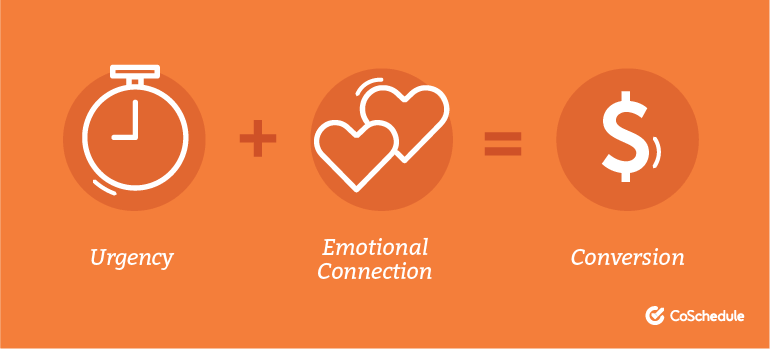
7. Repurpose and Curate Content
Great content doesn’t necessarily mean creating something completely new every time. There are ways you can repurpose your content to get the most value out of it. For example, you can repost or transform your content by changing it into a different format in order to engage a different audience.
For example, you can turn infographics into blog posts or combine articles to create an ebook.
In addition to repurposing your own content, you can also share content from other reputable sources. While you don’t want to share content from your direct competitors, there’s no rule against sharing content from other sources. Appropriate and timely articles and content from other sources allows you to provide more value to your followers while demonstrating your credibility and your knowledge of the latest news and trends.
Pro tip: Creating, curating, and posting content can be very time-consuming. Consider scheduling your social media campaign posts ahead of time to save you from having to do it in real-time. Tools such as Hootsuite, Crowdfire, and CoSchedule allow marketers to schedule posts with text, photos, videos, hashtags, and more.
8. Create an Effective Call-to-Action
If you want your followers to do something, ask them to do it.
A call-to-action (CTA) does just that. By including a CTA on all your social media posts, people are more likely to interact and engage.
CTAs can be simple — like asking people to sign up, donate, learn more, or comment below.
A CTA can increase your click-through-rate (CTR), engagement, and success of your social media campaigns.
If you want to improve your conversion rates, creating an effective call to action is key. Invite your visitors to take a survey or a poll, provide a review, enter a contest, or join your mailing list.
However, it’s still important to balance out the calls to action with purely informational content that is helpful and engaging. Your followers will notice if you’re constantly pushing donation appeals to them. By balancing promotional and non-promotional content, your followers will perceive you as being helpful and will want to engage with you more.
Your followers should not feel pressured or pushed into becoming donors.
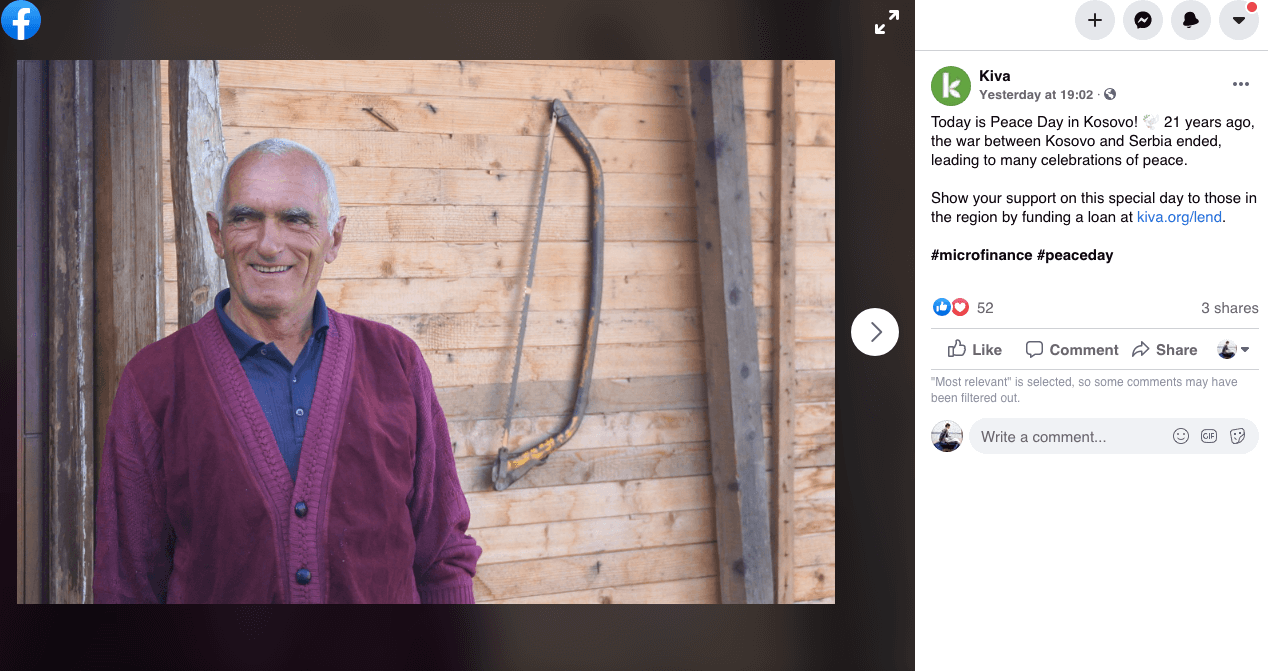
9. Use Targeted Ads
With organic reach in decline, it’s becoming clear that anyone who wants success on social media needs to be advertising.
On average, a person spends anywhere from 45 minutes to 2 hours on social media per day!
However…
91% of total ad spend is viewed for less than a second; as a result, $38 billion in digital ad spend was wasted in 2019.
To have a chance to be successful in ads, you need to create various ads to target different sections of your audience. Ads are more likely to be successful if they’re targeted.
Test out different versions of your ads to see what works best. You can change the photos or text you use, or the landing page you link to, for example.
If part of your nonprofit social media campaign involves driving traffic to a specific place on the web to take a particular action (such as filling out a survey) be sure to create a designated landing page. This comforts visitors because they know they are in the correct place right away. Sending visitors to your homepage can be confusing because it requires them to figure out where to go next.
Pro tip: Set a budget for how much your nonprofit will spend on Facebook ads. It’s easy to spend more than you’d hoped, especially if you’re advertising a fundraising event.
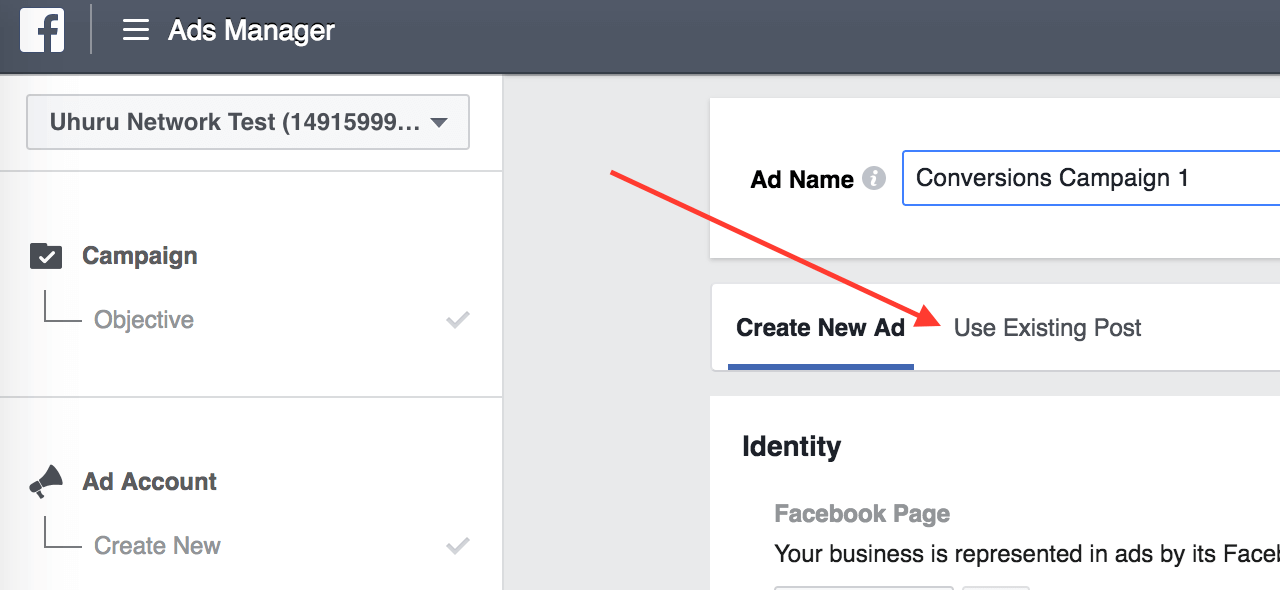
10. Engage With Your Audience
Don’t forget that social media is social. So don’t use social media as a broadcasting platform!
Set aside a bit of time to answer questions, “like” comments, and respond to feedback. By taking the time to engage with your followers, you will give them a personal experience that will keep these followers invested in your brand.
Ask your audience questions, take a poll, or comment on their posts and engage in conversations they are already having. The more active you are on social media, the greater your chances are of increasing your brand awareness. Consistent interaction with your followers will be a fruitful addition to your overall social strategy.
If your followers leave questions, comments, or concerns on your posts, you should reach back out to them. This creates a good image of your brand and increases loyalty and trust.
Always encourage conversations and keep communication lines open. Make engaging with your organization as easy as possible. Give your followers a voice. Feature user posts that reflect your mission and lets your supporters share their opinions.
In a nutshell, building a strong community on social media is all about fostering engagement. The more relevant engagement with your community, the more valuable it becomes to its members. You should also keep a close eye on which topics and content types perform best and use that information to shape your community-building in the future.
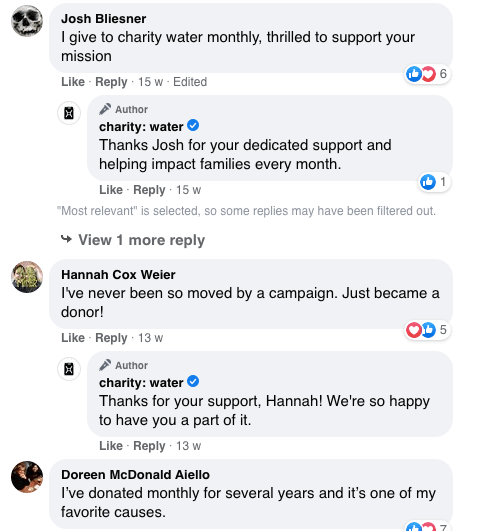
11. Assess The Results
Analyzing your results and subsequently adjusting the course is probably one of the most important parts of a social media campaign.
Assess how your campaign is doing while it’s still happening, and also carve out an adequate amount of time after the end of every campaign to analyze the full scope of results.
If you completed Steps 1 and 2, it should be easy to measure results against goals and KPIs.
Then, it’s time to jot down some things that might not have gone the way you planned throughout your campaign. Whatever they are, making note of any pitfalls allows you to get ahead of the problem for next time.
You can also use this information to test different posts, campaigns, and strategies against one another. Constant testing allows you to understand what works and what doesn’t, so you can refine your strategy in real-time.
Pro tip: In addition to your social media metrics, surveys can also be a great way to find out how well your campaign is doing. Ask your followers whether you’re meeting their needs and expectations, and what they’d like to see more of. Then make sure to deliver on what they tell you.

Social Media Campaign Ideas for Nonprofits
1. Use Hashtags
Hashtags are powerful tools for growing on social media, especially on Instagram and Twitter. They can help drive engagement, help you engage with your audience, listen, and observe sentiments about your campaign, and just as importantly – help you track the results of your campaigns.
Create a unique, branded hashtag for your brand and your specific campaigns. This way you can more easily track engagement and user-generated content even if users don’t remember to tag your nonprofit directly in their posts.
However, branded hashtags shouldn’t replace the more common hashtags that your audience is using. To maximize reach and trackability, use both kinds in each post.
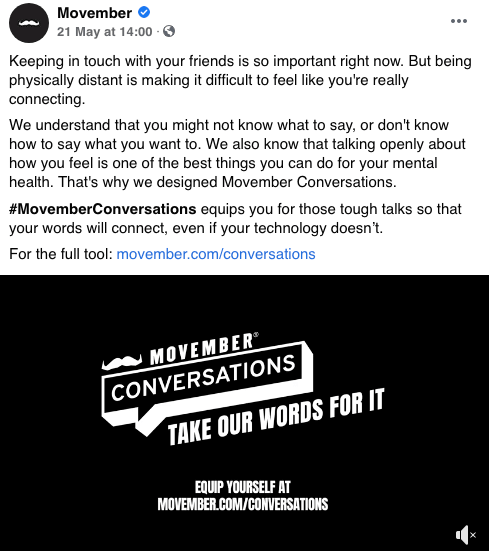
2. Promote Your Social Media Accounts
To grow your audience, cross-promote your social media accounts. For example, you can remind your Instagram followers that you have other accounts, and ask them to follow you there.
Add your social media icons at the bottom of your website page and your newsletters.
3. Create Contests
Contests can be an excellent way to engage your followers while growing your audience and increasing your exposure. Make sure that the rules are plain and simple and that your followers are required to do minimal work to enter.
Finally, if you choose to run contests, make sure they’re relevant to your audience and authentic to your brand.
4. Make Use of Chatbots
One of the simplest uses of AI is chatbots – services that sometimes use artificial intelligence and that you interact with via a chat interface. They use messaging services like Messenger, Slack, Telegram, and more.
Jewelry brand Lokai and nonprofit Charity: Water used a chatbot Yeshi, bringing a creative spin to storytelling, to bring more awareness to the water crisis in Ethiopia girl’s using Facebook Messenger. The chatbot also accepts donations. Chatbots can deliver personalized care to donors and potential donors 24/7.
Messaging apps are growing fast. Facebook Messenger for example is used by over 1 billion people every month and it is growing faster than Facebook. This presents a big opportunity for your nonprofit. Your chatbot can handle donations, member registrations, and give out information about your programs and services.
5. Do Livestreams
In a recent survey of 1,000 respondents, 80% said they would rather watch a live video from a brand than read a blog, and 82% prefer live video to social media posts.
Hosting a live stream allows you to talk to your followers in real-time, asking, or answering questions. Live streaming can help you connect with your audience in a human way and personify your brand. By personifying your brand, your followers are more likely to feel connected to you.
6. Be Human
Across the board, people are demanding authenticity. Nonprofits that prioritize donors over data will win the race. There’s a value in returning to the basics and focusing on the humanistic aspect of being and running a nonprofit.
For example, several social media platforms have invested in the feature of “ephemeral” content, in which content deliberately “times out” after a set point.
Although ephemeral content is temporary (with an average lifespan of around 24 hours), it can still make a big impact. To many users, it comes across as more authentic.
Additionally, don’t be afraid to use humor and speak like a real person – avoiding jargon and generalities.
Show your donors you see them for more than their wallets.
7. Use Video
One-third of online activity is spent watching videos. Over 500 million (half a BILLION) people are watching videos on Facebook every day.
On Facebook, video posts get higher average engagement than link posts or image posts, according to BuzzSumo who analyzed 68 million Facebook posts.
Further, marketers who use video grow revenue 49% faster than non-video users.
Everything points to one thing. Video is the way to go in 2020 to raise more funds and grow your reach.
Social video generates 1200% more shares than text and images combined.
Viewers retain 95% of a message when they watch it in a video compared to 10% when reading it in text.
With videos, you want to catch people’s interest and keep it. So, always include a call to action, encouraging your viewers to engage.
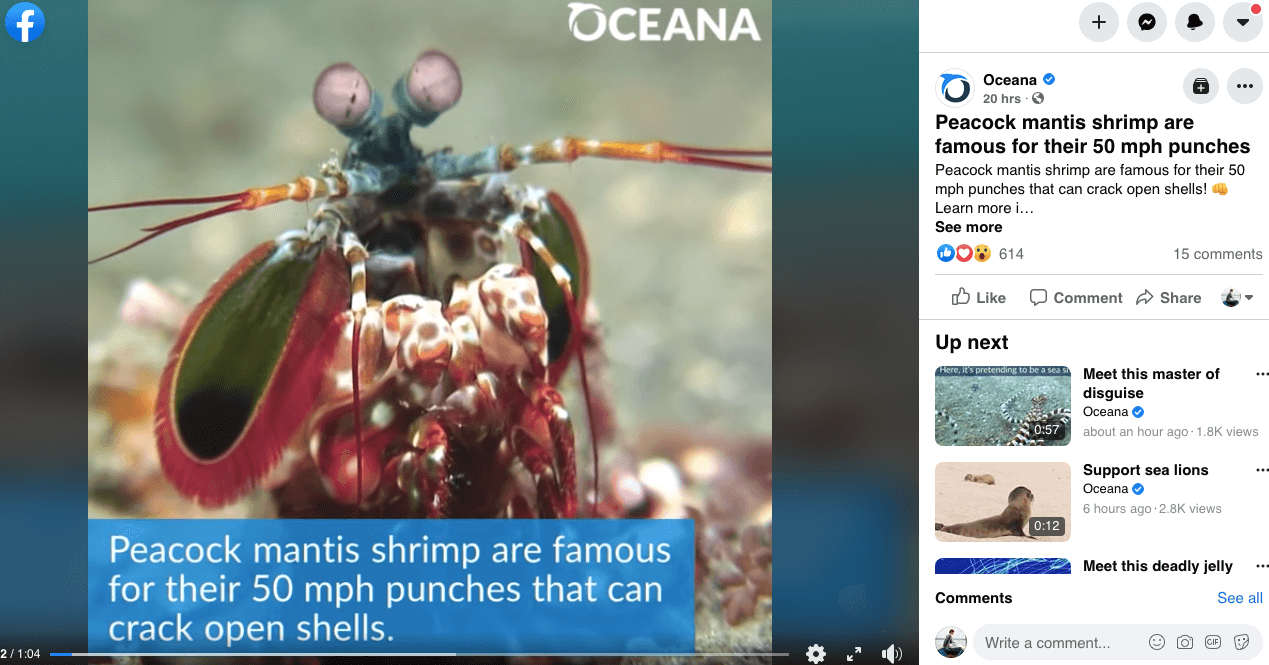
Over to You
Although social media trends are changing, social media is here to stay.
And if you want your nonprofit to stay too, you’ll need to build a sound social strategy.
As you build out your social strategy, measure your baseline, and set clear goals and KPIs. Create and curate unique and engaging content for your brand, paying attention to the variety of the posts and their schedule. Understand and listen to your audience to join relevant conversations already happening on social, and to guide your future social strategy. Track your content’s performance on social, and adjust your content to align with your followers at every stage of their journey.
With the possibility of significant reach, ability to directly engage with donors and other stakeholders, the ease of sharing your content with thousands (or even millions) of people, and their budget-friendly nature – social media marketing campaigns are not to be missed out on.
Check out our network-specific guides:
At Donorbox, we prioritize solutions that help nonprofit leaders like you increase their donations. We know that fundraising is key to successful nonprofit management. And we know that effective donation forms are a vital part of sustainable fundraising, so we built a solution responding to that need.
We also made it simple and affordable, ensuring a no-hassle process for everyone involved!
And check out our Nonprofit Blog for more free resources.
